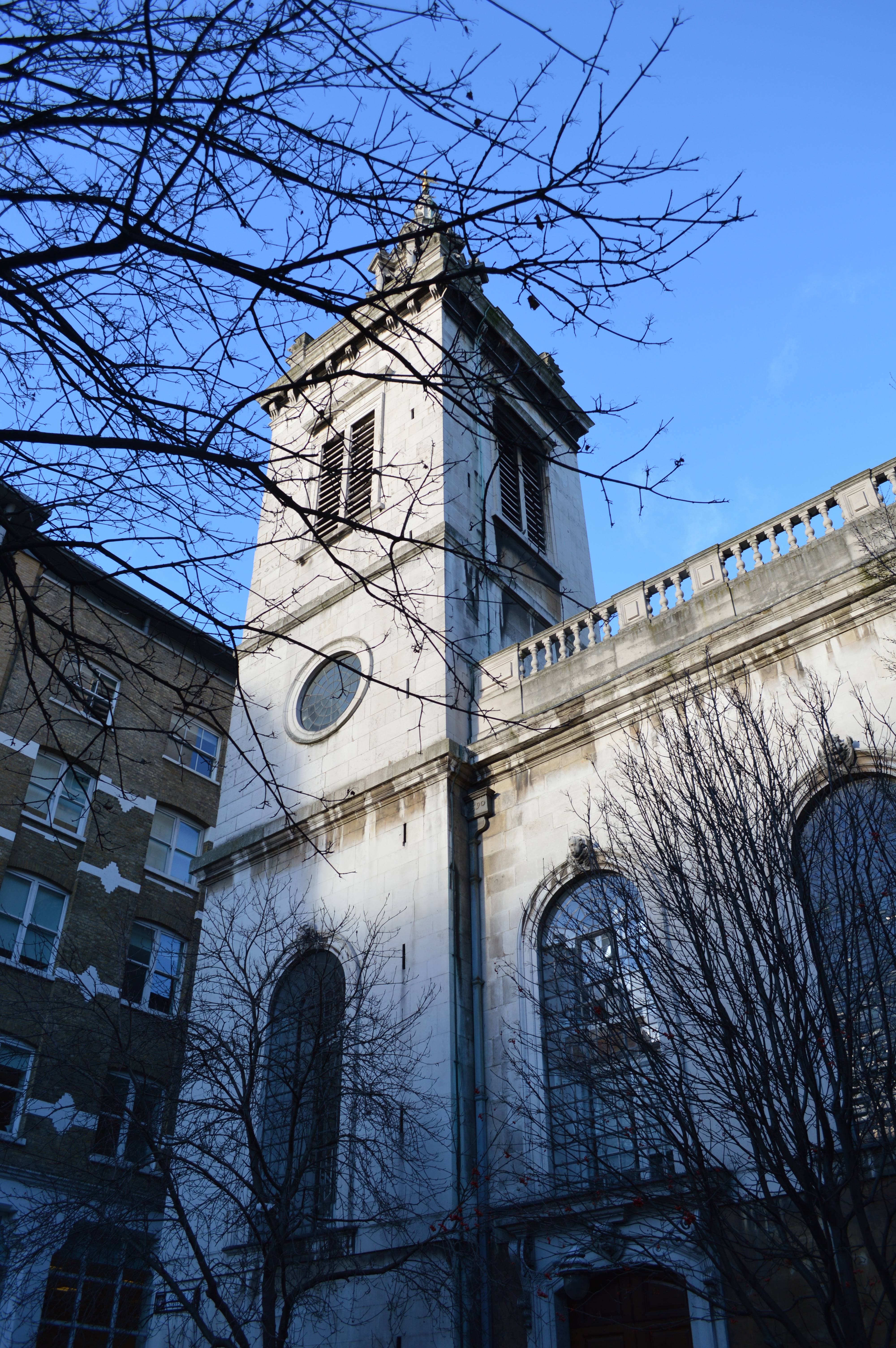
St Michael Paternoster Royal is one of 51 churches rebuilt by Christopher Wren after the Great Fire. St Michael is the archangel Michael – God’s warrior angel – who had seven churches dedicated to him in the City, and, so to distinguish it from the others it got the suffix ‘Paternoster’ after Paternoster Lane, a local street where rosaries were made and sold. The ‘Royal’ part of the title is a corruption of another street called Le Ryole, which itself was believed to come from a mispronunciation of the town of Le Reole in Burgundy. This connects to the wine merchants from Burgundy who lived in this area – Vintry, from ‘vintners’ (wine merchants). Like many things in the City the layers of history and threads of connection are still visible beneath the glossy surface of the 21st century.
As well as being destroyed in the Great Fire, it was burned again by German bombing in WW2 – though not in the Blitz. It survived everything the Luftwaffe dropped around it in 1940/41, only to be hit by a flying bomb in 1944. Only the walls and the tower survived.
There was debate over whether it should be rebuilt, but eventually restoration was done, that being completed in 1968, making St Michael the last of the WW2 damaged churches to be restored.
The original church was associated closely with Richard Whittington – the Dick Whittington of Christmas pantomime fame.- and the church has a contemporary stained glass window that features Dick and his cat. For those of you who don’t know the pantomime story, Dick was a poor lad from Gloucestershire who came to London to seek his fortune (“the streets are paved with gold!”).
Things didn’t pan out and down on his luck he left the City, stopping to rest on Highgate Hill for one final look back. Here he hears the City’s bells that seem to say to him “turn again Whittington, thrice Lord Mayor of London”. He goes back, acquires a cat, goes on a sea voyage, the cat kills all the rats in the palace of the Sultan of Morocco who gives Dick a great fortune. He returns to London, marries his sweetheart, becomes even richer, becomes Lord Mayor of London, lives happily ever after. (Big chorus number, curtain, encores.)
You might not be surprised to hear that a lot of this isn’t strictly true.
Richard Whittington did come to London from Gloucestershire (in 1370) to make his fortune, but he came from a reasonably prosperous family (although as the third son he needed to get a trade as he wouldn’t inherit much). He was apprenticed to the Mercers’ Company and trained to be a dealer in cloths and fabrics. He was very successful in this, trading in the most expensive products and dealing a lot with the Court and the King, Richard II.
The trade went well, so well in fact that he started lending money, including, again, to the king. That brought a lot of political influence and he became a trusted advisor to Richard and to the monarchs that succeeded him.
In 1392 Richard stripped the City of its ‘Liberties’ – its rights and independence – and only restored them in 1397 after the City paid a huge sum of money to get them back. Even then Richard imposed his choice of mayor – who was none only than Richard Whittington.
It shows what an operator Whittington must have been that even though he was appointed by the king, he was subsequently elected three more times by the City’s Aldermen (so he was actually Mayor/Lord Mayor four times, rather than the three of pantomime fame.)
In his lifetime he gave money to the City for good causes – he helped rebuild St Michaels, built a ward for unmarried mothers at St Thomas’s, put money towards the rebuilding of Guildhall, and paid for a 128 seat public lavatory which was ‘flushed’ by the Thames twice a day.
He died childless and left money to the City (£6000 – an extraordinarily large sum for the 15th century). This helped build the first Guildhall library, repaired Barts Hospital, installed public drinking fountains and established almshouses here at St Michael’s. This was called a ‘college’, which is why the street next to the church – which used to be Paternoster Lane – is now College Lane.
He was buried in the grounds of St Michael’s , but the site of this was lost in the Great Fire. In 1949 an unsuccessful attempt was made to locate the grave, but – it is said – they did find the body of a mummified cat. So even thought there is absolutely no evidence that Whittington even owned a cat, he will always be associated with them – the church has its window, there’s a carving outside the Guildhall Art Gallery, an a cat on the ‘Whittington Stone’ on Highgate Hill (where you’ll also find the Whittington Hospital).

